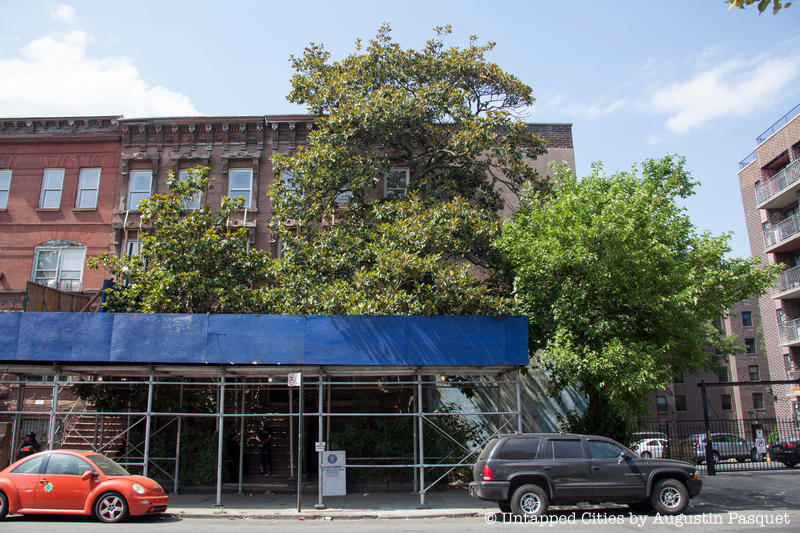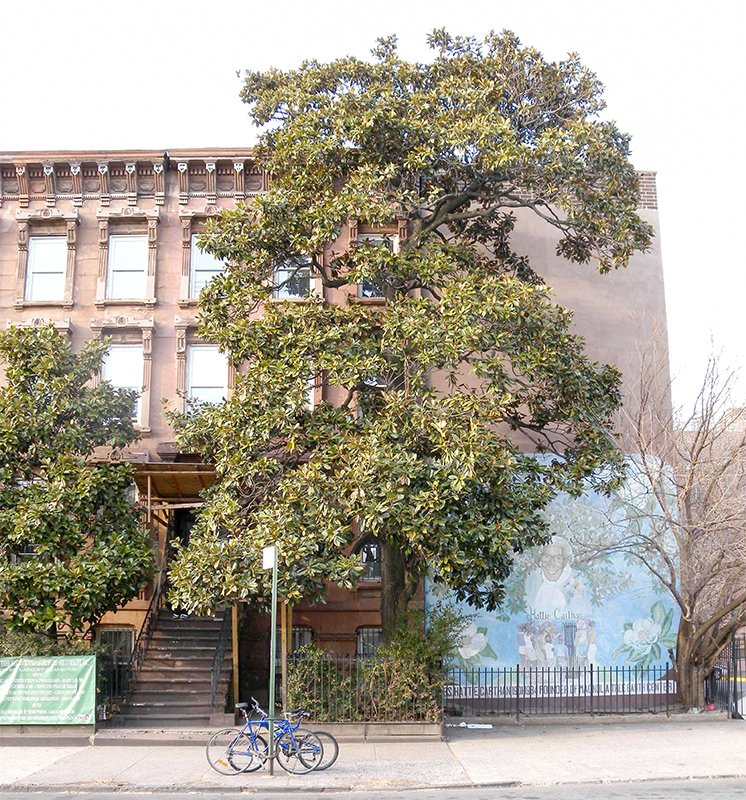
A Magnolia tree on Lafayette Avenue, between Marcy and Tompkins Avenues in Bedford-Stuyvesant, is one of only two trees that have been designated as New York City landmarks. This tree, of the species Magnolia grandiflora, was planted in 1885 by a William Lemken from a seedling brought back from North Carolina. Placed in front of his townhouse, the evergreen tree releases white lemon-scented flowers which are the state flowers of Mississippi and Louisiana. The Magnolia grandiflora hails from North Carolina, and was one of the first exotic trees to be exported to Europe. It can grow up to 70 feet, but rarely survives north of Philadelphia.
 Photo from Wikimedia Commons by Jim Henderson
Photo from Wikimedia Commons by Jim Henderson
This Magnolia grandiflora was designated a New York City landmark on February 3, 1970 by a unanimous vote. In a public hearing however, opinions were more mixed — 9 spoke in favor, 8 were opposed. Regardless, the Landmarks Preservation Commission clearly felt passionate about the tree, writing in the official designation report, “It is all the more remarkable, therefore, that the seedling which Mr. William Lemken sent up from North Carolina some 85 years ago…should have survived so long. It is thus for its inherent beauty as well as for its rare hardiness that this particular Magnolia grandiflora has become a neighborhood symbol and a focus of community pride.”
In fact, a local resident, Hattia Carthan, was responsible for preserving the tree in the 1950s and raising funds for it in the face of oncoming development — a parking lot and housing projects were planned next to it. Carthan founded the Magnolia Tree Earth Center in 1972 to bring green programs to the Bedford-Stuyvesant neighborhood, using the symbol of the famous tree to encourage environmental awareness and youth development in the community. The Magnolia Tree Earth Center is still active today, located next door at 677 Lafayette Street.
Unlike other designation reports, the one for Magnolia grandiflora contained very specific instructions due to the unique nature of the landmark. These specifications included how buildings on the block were to be demolished to make way for the housing project in order to protect the tree, what thermostat settings needed to be on new basement rooms to be built, and how to care for the ground around the tree. “The Commission, no more than any of the ardent proponents of this designation, wishes to see a dead tree as a Landmark,” they wrote.
Sadly, scaffolding has been up on the brownstone at 679 Lafayette Avenue since 2011 but the Magnolia tree is still standing tall.
Next, check out the Redwood Tree on Houston Street in NYC and the Oldest and Tallest Tree In NYC: The Queens Giant in Alley Pond Park.






